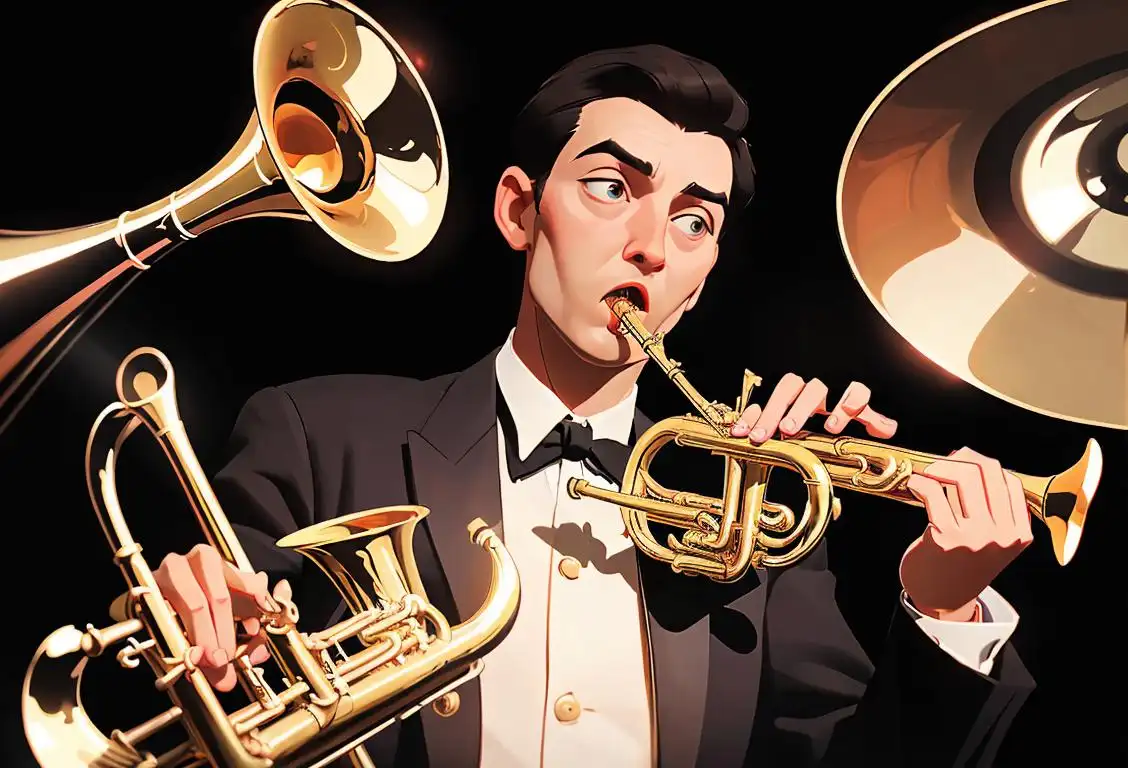National Trumpet Day

Brace yourself and catch your breath because we're about to dive deeply into the melodious sounds of National Trumpet Day. A day that has been observed with a handful of online mentions, it seems like the perfect occasion to blow your own horn (hopefully, a trumpet) about!
When is Trumpet Day?
It's national trumpet day on the 10th October.
A Brief History of the Trumpet Day
It seems that National Trumpet Day isn't so much a day that is celebrated nationwide or even worldwide, but rather one that a handful of passionate trumpeters decided needed to exist. From our meticulous online digging, it appears the most mentions of National Trumpet Day were on October 10, 2015. When exactly it started blowing its own trumpet in the vast calendar of national days is a bit foggy, but we're all for celebrating the glorious sound of brass!
The Trumpet of Celebration
While it might not have the fame of National Donut Day or the 'awww' factor like National Puppy Day, National Trumpet Day is certainly its own unique jam in the orchestra of national days. It's a day for passionate musicians, brass band enthusiasts and those who simply love to create a little music in their life to get together and pump out some sweet, sweet melodies.
How to Celebrate National Trumpet Day
You don’t have to be a member of a jazz band or orchestra to appreciate the charms of National Trumpet Day. Even if you can't blow a note, why not spend the day listening to some famous trumpet scores? Trust us, it's a blast!
History behind the term 'Trumpet'
1500 BC
Early Horns
In ancient times, the trumpet as we know it today did not exist. However, early civilizations were familiar with various forms of horn instruments. Around 1500 BC, the Egyptians were using long, curved instruments made from animal horns or metal. These primitive horns were primarily used for military and ceremonial purposes.
9th Century
Medieval Trumpets
During the Middle Ages, the trumpet underwent significant advancements. Trumpets made of metal, such as bronze or silver, emerged in Europe during the 9th century. These early trumpets were straight and lacked valves or keys, making them limited in terms of the range of notes they could produce. Nevertheless, their bright and penetrating sound made them ideal for military signaling and fanfare.
14th Century
Slide Trumpets
By the 14th century, musicians began experimenting with different ways to change the pitch of the trumpet. This led to the development of slide trumpets, also known as sackbuts. Slide trumpets featured a movable slide that allowed players to alter the length of the instrument, thus changing the pitch. This innovation expanded the range of notes that could be played on the trumpet, making it a more versatile instrument.
19th Century
Valved Trumpets
The 19th century marked a major breakthrough in trumpet design with the invention of valves. In the early 1800s, valve mechanisms were first added to the trumpet, enabling players to easily change the pitch with the press of a finger. This innovation revolutionized trumpet playing, making it more accessible and adaptable to various musical styles. Valved trumpets quickly gained popularity in orchestras and brass bands.
20th Century
Jazz and Modern Trumpets
During the 20th century, the trumpet found its way into various genres of popular music, particularly jazz. Renowned jazz musicians like Louis Armstrong and Miles Davis played a pivotal role in popularizing the trumpet as a lead instrument capable of expressive solo performances. Advances in trumpet construction, including the introduction of improved materials and advanced manufacturing techniques, further refined its sound and playability.
Did you know?
Did you know that the trumpet is one of the oldest instruments in the world, dating back to 1500 BC?Tagged
awareness fun celebration music trumpetdayFirst identified
10th October 2015Most mentioned on
10th October 2015Total mentions
5Other days
Trumpet Day
Bonang Day
Album Day
Drummer Day
Idol Day
Adele Day
Ed Sheeran Day
Hug A Bassist Day
Taylor Swift Day
Drake Day








